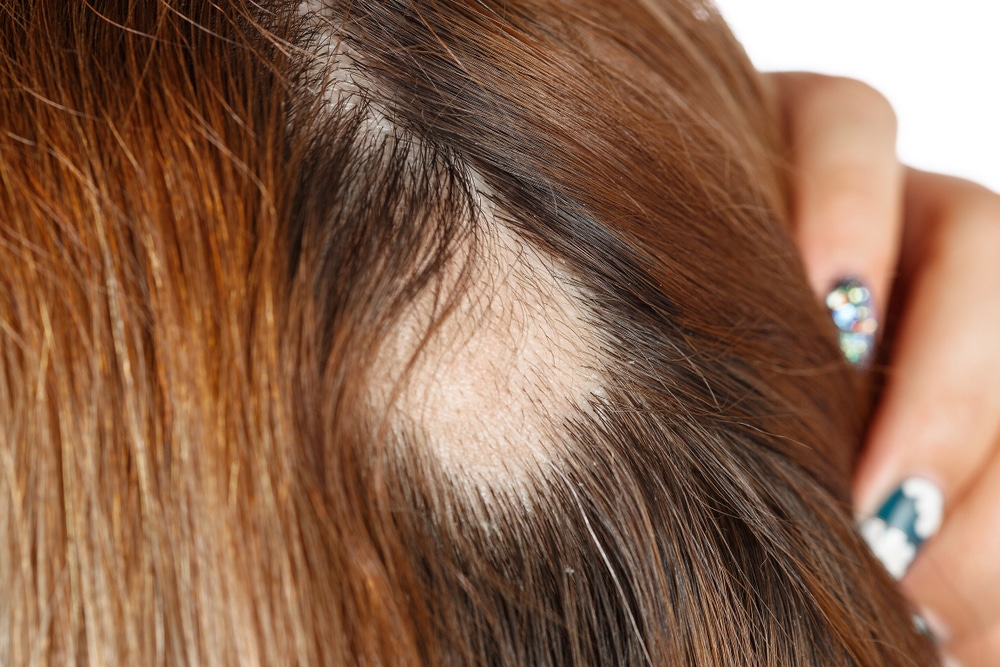
Laser Hair Removal for Sensitive Areas: What You Need to Know
July 3, 2024
What Causes Hair Loss and Treatments to Help
July 3, 2024Living with alopecia can be a difficult journey, but you don’t have to go through it alone. Many people with alopecia feel overwhelmed and unsure of what to do when facing the physical, mental, and emotional effects of this condition. But there is hope! In this blog post, we’ll explore the various ways to cope with alopecia, from seeking emotional support to exploring different treatment avenues offered by our hair experts here at Estehair. Wherever you’re at in your alopecia journey, we’ll help you reach the other side in a way that works for you.
What are the Different Types of Alopecia?
Alopecia encompasses a range of conditions that result in hair loss, each with its distinct characteristics and causes. Understanding the different types of alopecia can help individuals better navigate their own experiences and seek appropriate treatments. Some of the most common types of alopecia include:
Alopecia Areata:
Alopecia areata is an autoimmune disorder that leads to sudden, patchy hair loss on the scalp or body. It occurs when the immune system mistakenly attacks hair follicles. This type of alopecia can range from mild, with small, isolated patches, to more severe cases where significant hair loss occurs.
Androgenetic Alopecia (Male and Female Pattern Baldness):
Androgenetic alopecia is the most common form of hair loss, affecting both men and women. It’s often referred to as male or female pattern baldness. This genetic condition leads to gradual thinning of hair on the scalp, typically starting at the crown or temples in men and resulting in diffuse thinning in women.
Alopecia Totalis and Alopecia Universalis:
Alopecia totalis involves the complete loss of hair on the scalp, while alopecia universalis leads to the loss of all body hair, including eyebrows, eyelashes, and body hair. These forms of alopecia are rarer and can have a profound impact on one’s appearance.
Telogen Effluvium:
Telogen effluvium is a temporary form of hair loss caused by a disruption in the hair growth cycle. It’s often triggered by factors such as severe stress, hormonal changes, or medical conditions. Hair follicles prematurely enter the resting (telogen) phase, leading to noticeable hair shedding.
Telogen Effluvium:
Telogen effluvium is a temporary form of hair loss caused by a disruption in the hair growth cycle. It’s often triggered by factors such as severe stress, hormonal changes, or medical conditions. Hair follicles prematurely enter the resting (telogen) phase, leading to noticeable hair shedding.
Coping Strategies
Dealing with alopecia goes beyond the physical aspect of hair loss, it involves emotional resilience, self-acceptance, and the exploration of effective coping strategies. Some strategies that can help to boost self-esteem and regain your sense of self control include:
Seeking Emotional Support:
Having alopecia can be emotionally distressing, and it’s essential to reach out to friends, family, or mental health professionals for support. Connecting with others who have experienced similar challenges can provide a sense of community and understanding.
Open Communication:
Talking openly about your experience with alopecia can help educate others and reduce the stigma surrounding hair loss. When we’re open about our struggles, it becomes easier for those around us to be empathetic and supportive, and not to mention takes a load off our own shoulders.
Self-Care and Acceptance:
Practicing self-care routines can boost self-esteem and help manage stress. Engage in activities you love, prioritise relaxation, and focus on your overall well-being. Learning to accept yourself, regardless of your hair’s appearance, is a powerful step toward coping with alopecia.
Treatment Options
Topical Treatments:
Some types of alopecia can be treated with topical solutions, such as minoxidil, which promote hair growth. While results can vary, these treatments can be effective in stimulating hair follicles and encouraging regrowth.
Corticosteroids:
In cases of alopecia areata, corticosteroid injections can be administered directly into balding patches. These injections help suppress the immune system’s attack on hair follicles and promote regrowth.
Platelet-Rich Plasma (PRP) Therapy:
PRP therapy involves using a patient’s own blood plasma, enriched with growth factors, to stimulate hair follicles. This innovative treatment has shown promising results in promoting hair growth, and here at Estehair, we’re proud to offer this treatment to our valued patients.
Hair Transplants:
For those seeking a more permanent solution, hair transplant surgery can help to restore a full head of thick and healthy hair with incredibly natural-looking results. We’re honoured to offer two advanced types of hair transplant, Follicular Unit Extraction (FUE) and Follicular Unit Transplant (FUT), both designed to provide optimal results and restore your confidence for good.
It’s important to remember that although difficult, alopecia can be effectively managed. By combining emotional support, innovative treatments, and the expertise of professionals like Estehair, you can find a path forward that aligns with your goals and aspirations. Alopecia doesn’t define you; it’s just one aspect of your unique story. Through acceptance, resilience, and the pursuit of the right solutions, you can continue to shine and live life on your terms.
Book your free consultation with Estehair today – and discover just what we can do for you!





